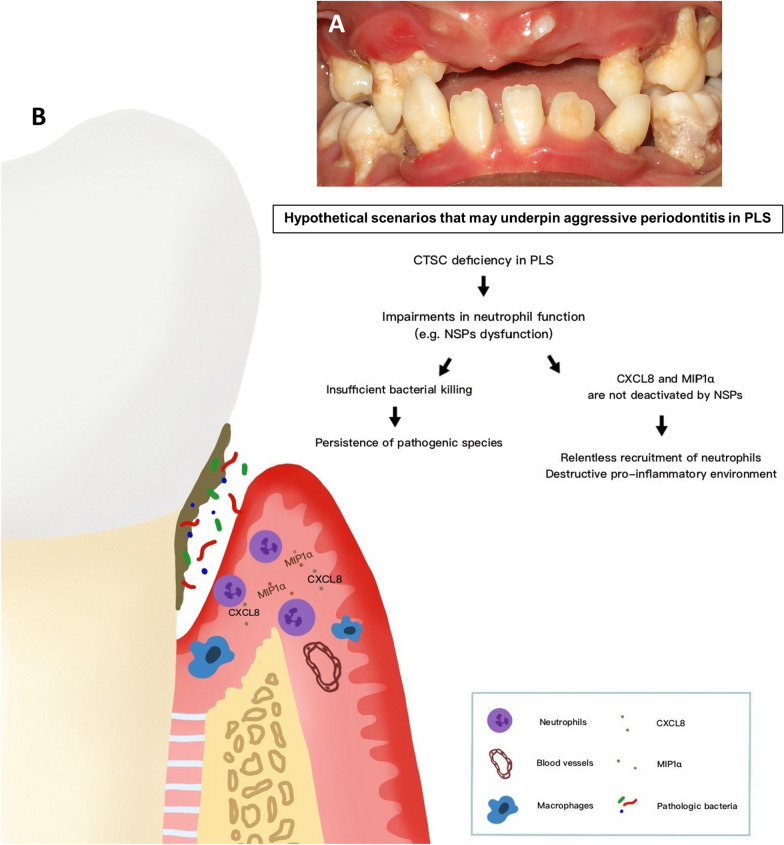Fig. 3.
Clinical features of aggressive periodontitis and mechanisms of CTSC in periodontal destruction. A Oral features of a 7-year-old patient with generalized aggressive periodontitis. B The involvement of CTSC in periodontal tissue destruction is mediated through several mechanisms. Two key scenarios are likely co-contributors for aggressive periodontitis within the context of PLS, which entail the persistense of the key periodontal pathogens (such as Aggregatibacter actinomycetemcomitans and Porphyromonas gingivalis) and the continuous recruitment of neutrophils. These may trigger an exaggerated immune response and activate innate immune cells, including neutrophils, leading to chronic inflammation and the production of inflammatory mediators that can activate CTSC within the periodontal niche. Additionally, in the context of PLS-associated periodontitis, the uncontrolled recruitment of neutrophils might also lead to excessive release of proteases, including CTSC. This unrestrained protease activity can contribute to the degradation of connective tissue and alveolar bone matrix, disrupting the delicate balance between tissue destruction and repair, leading to the progressive periodontal tissue destruction observed in aggressive periodontitis

